Miljø- og Planlægningsudvalget 2009-10
MPU Alm.del Bilag 210
Offentligt
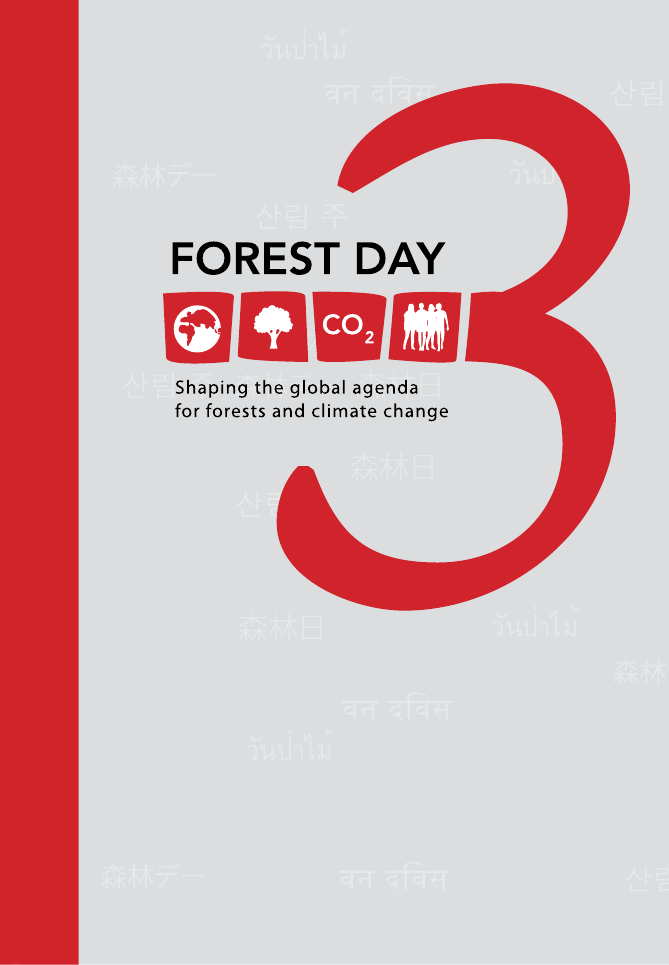

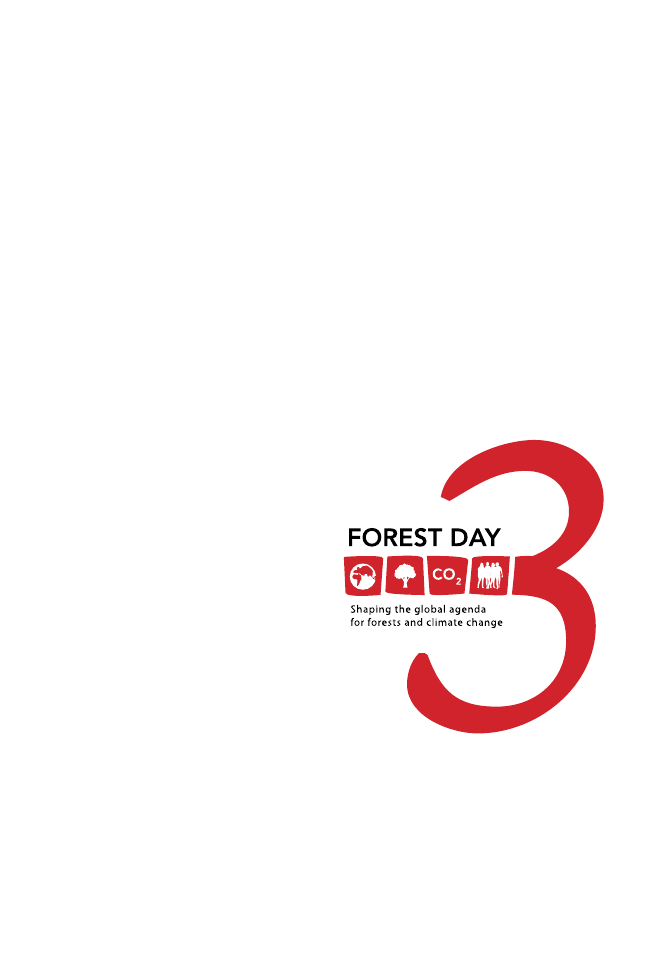




































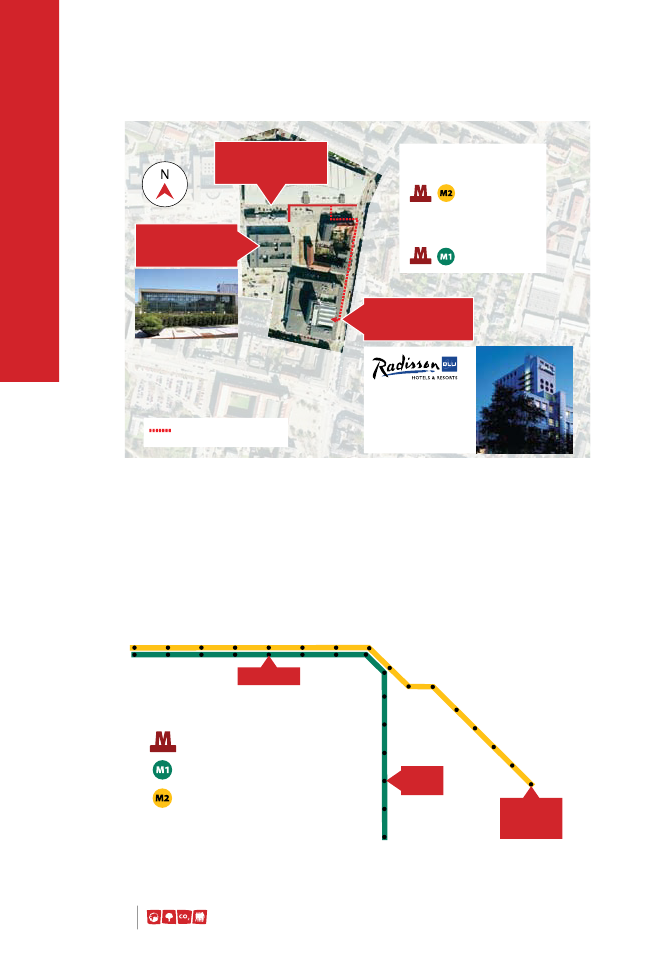
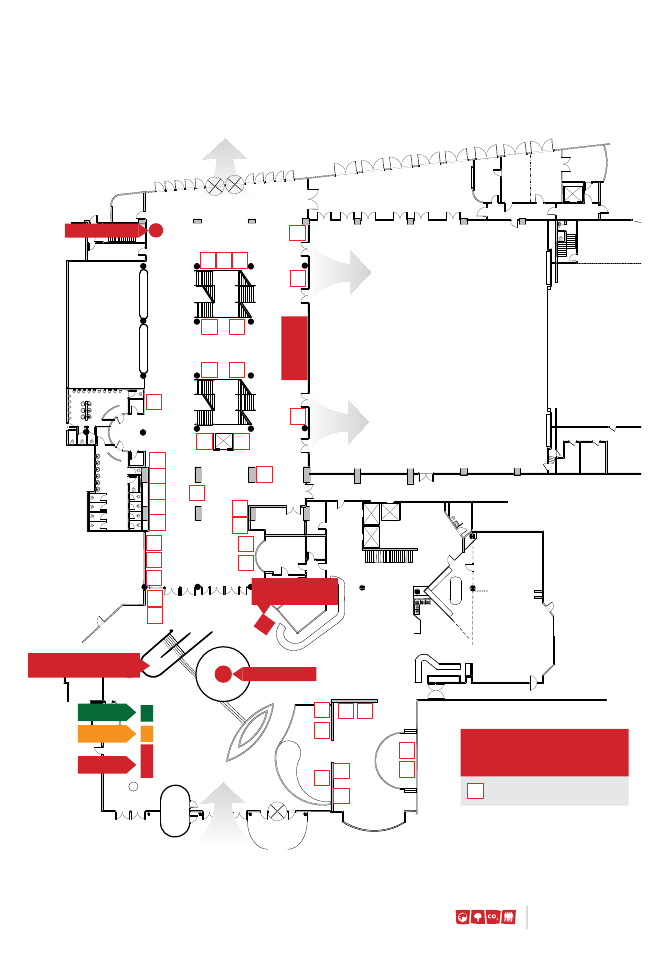
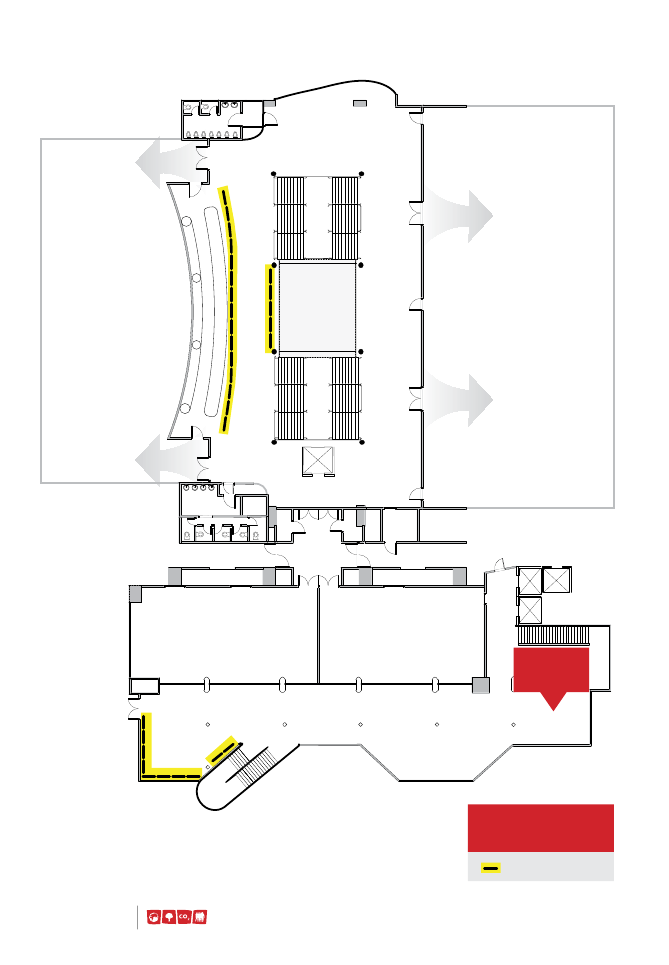


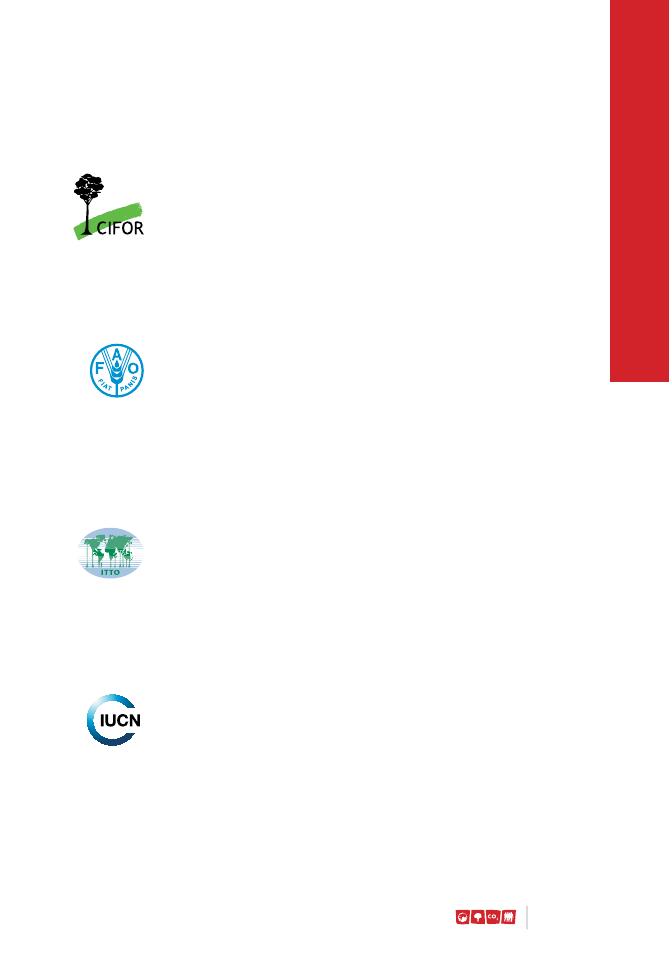
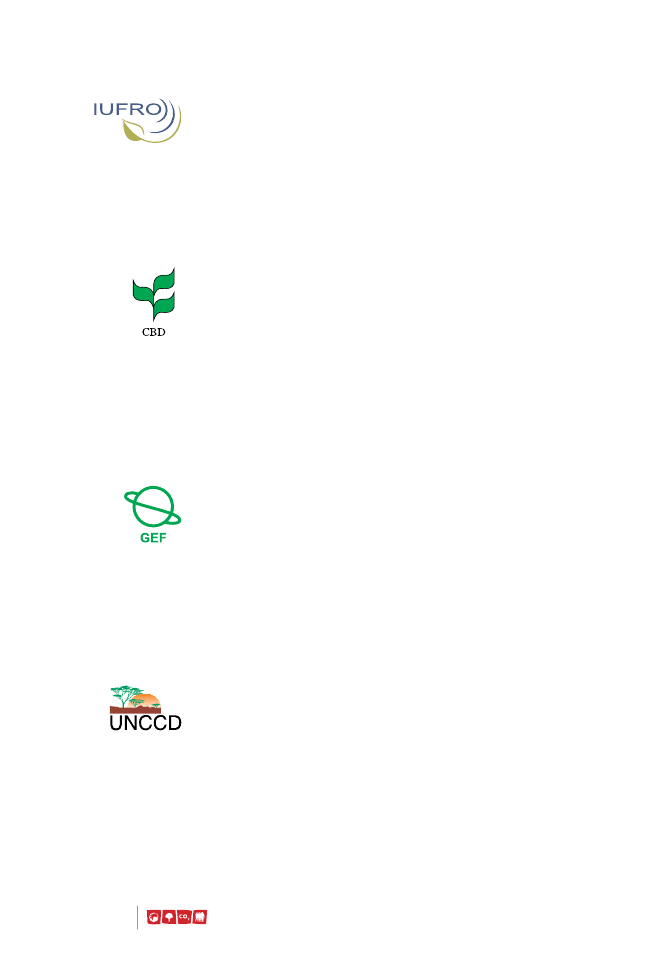
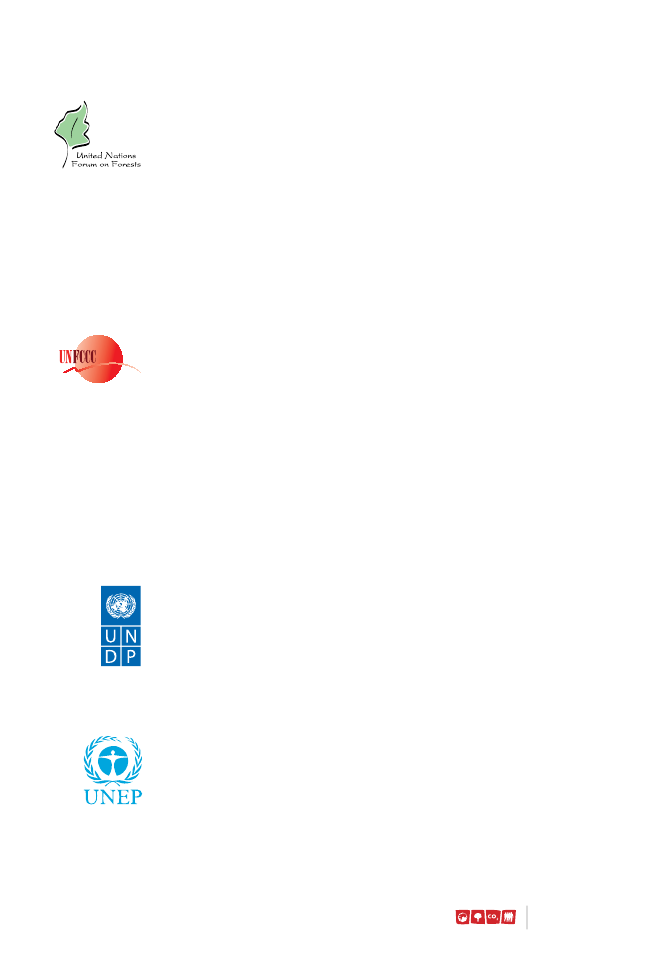





forêt tag des waldes dzień lasu journée de lala forêtdia da los bosquesorestaskovdag forest araw ddía deдень лесаda oresta forest arawnée deηforêtτου δάσουdía de los bosques jourlaέραα του δάσουosquesbos dag dzień lasuη έρla forêt skovdagнь лесаhari hutan journée dea da día de los bosques skovdag forest araw diaorestadeshari hutan hari hutan bos dag dia da orestaa da orestalos bosquestag des waldes día deournée de la forêtforest arawнь лесаdia da orestades araw dia da oresta journée de la forêt tagwaldesrestorest arawosques journée de la forêtdia da oresta fdes waldesь леса skovdagjournée de la forêt tag dsques de los bosques hari hutan día de los boldes díaorest arawia da oresta hari hutandia da oresta foα του δάσουforêturnée de laη έραdzień lasubos diaest araw dag da oresta día de los bosquesvdagjournée de la forêtдень леса skosquesos bosquesía de los bosquestag des waldes día de lohari hutan forest araw bos dag dia da orestaa da orestaforêt tag des waldesSunday,lasu journée de ladzień13 December 2009la forêtRadisson Blu Falconer Hotelosquesдень лесаbos dagand Conference Centre, Denmarka da η έρα του δάσου skovdag forest araw diorestaUNFCCC COP15 Parallel Event
ée de la forêt
programme
Sunday, 13 December 2009
Radisson Blu Falconer Hoteland Conference Centre, DenmarkUNFCCC COP15 Parallel Event
Forest Day 3 brings together many of the world’s keyforest stakeholders during the 15th Conference ofthe Parties of the UN Framework Convention onClimate Change, as a platform to debate issues andidentify priorities in order to ensure that forests aresuitably incorporated into any future climate changemitigation and adaptation strategies.
ForewordAbout the organisersSchedule of eventsPlenaries and sessions••••••Opening plenarySubplenaryGlobal views on forests and climate changeParallel learning events 1Parallel learning events 2Closing plenary
4810111112151624313235384243
Posters on displayExhibition boothsVenue and floor plansMediaCollaborative Partnership on Forests
ForestDay3
3
contents
foreword
The United Nations Climate Change Conference inCopenhagen this December has put forests and theconsequences of different forest management practiceshigher on the global political agenda than ever before, forgood reason.Whilst forests and other land ecosystems currentlycapture and store more than a quarter of the world’scarbon emissions, deforestation and forest degradationsimultaneously contribute 17 to 20% of global CO2emissions. Evidently, majorcontributions to fighting climate change could be achieved through improvedforest management and land use practices.Forests themselves are vulnerable ecosystems that may be impacted significantlyby climate change, and are indeed far more than carbon stores. They harbourtwo-thirds of all land-based biodiversity, and generate critical ecosystem goodsand services such as water, food, medicine, fuel and income from more than5,000 commercial forest products. Forests sustain the cultural and spiritualidentity of billions of people, foremost among them indigenous people and localcommunities. If sustainably managed, forests have the potential to provide forall these benefits, including their positive contributions to the global carbonbalance.New mechanisms for addressing climate change mitigation and adaptationmay provide new opportunities, as well as new challenges for forests and forestmanagement practices. It is crucial that we understand the complex interactionsbetween forests, people, climate and ecosystem services – and know how torespond.In Denmark we have centuries of land use experience to build upon. Aroundthe year 1800, our ancestors were facing the consequences of overuse of forestresources for fuel and timber, for agricultural expansion and for extensive grazing.Our forest cover reached an all-time low of 2 to 4%. We ran short of timberresources and some parts of the country suffered severely from storms and sanddrift. Agricultural lands could be buried in sand overnight, destroying decadesof hard work by farmers trying to make a decent living. The Danish Forest Act of1805 established new principles for forest management, including permanentprotection, which prevented conversion of forests to other land uses. This keyprinciple of protecting forests against conversion has remained the backbone ofDanish forest legislation to this very day.Nowadays, thanks to continuous afforestation efforts, Denmark has about 13%forest cover. The long-term objective is to have 20 to 25% forest landscapecoverage over the course of this century. Close-to-nature forestry has beencommonplace in recent years, replacing the plantation forestry that dominatedDanish forestry in the past. This change in forest management practices provides
4
ForestDay3
major benefits not only for biodiversity. It also makes the forests more robust andresilient against storms, drought and other possible impacts of current and futureclimate change.Forest Day 3 brings together forest policy makers, leading thinkers, scientistsand a range of other stakeholders to discuss the most urgent and importantchallenges and opportunities for global forestry in the context of climate change.I am proud to present the programme you now hold in your hands. It is the resultof joint and remarkable contributions from several organisations and individuals,led by CIFOR and co-hosted by partners from the Collaborative Partnership onForests. I owe them all my sincere thanks.Welcome to Forest Day 3! I look forward to your participation and activecontribution.Troels Lund PoulsenMinister for the Environment, Denmark
ForestDay3
5
foreword
On behalf of the 14 members of the Collaborative Partnershipon Forests, I welcome your participation in Forest Day 3. It isfitting to come together at this crucial time. Climate changeposes new and formidable risks, as well as possibilities, forforests and the hundreds of millions of people who dependon them. Decisions that will be made by the United NationsFramework Convention on Climate Change in Copenhagen andin the months to come are likely to have profound impacts onall types of forests, in developing and developed countries alike.The members of CPF have been collaborating for many years to support sustainableforest management worldwide for the perpetuation of the range of crucial goodsand environmental services furnished by forests. CPF has accomplished much overthe years through its comprehensive coverage of key forest issues, at both the policyand the technical levels. Our strength lies in the informal and voluntary nature of ourrelationship and our commitment to jointly address common concerns.Through Forest Day 3, CPF is catalysing the sharing of information and views on forestsand climate change. We fulfilled this function for other purposes, such as harmonisingforest definitions and streamlining forest-related reporting. Forest Day 3 bringstogether climate change negotiators – those making international policy decisions –and foresters – those responsible for implementing them. It also convenes a range ofstakeholders who hold many different views on forests. We hope not only to enrichindividuals’ understanding of and views on the issues but also to bring key messagesto climate change negotiators.A message from CPF’sStrategic Framework for Forests and Climate Change,a messagethat was echoed at the World Forestry Congress held this October in Argentina, is thatsustainable forest management is an effective framework for forest-based climatechange mitigation and adaptation. SFM, as recognised by the United Nations GeneralAssembly, ‘aims to maintain and enhance the economic, social and environmentalvalue of all types of forests for the benefit of present and future generations’. Achievingclimate change mitigation and adaptation while adhering to the principles of SFM willhelp to ensure that the multiple functions of all types of forests, whether managed fornature conservation, watershed protection, timber or other objectives, are achieved.The forestry community needs to engage fully in national and international policydiscussions and actions on climate change. We cannot afford to be mere bystanders inthe process. We have too much to win – and too much to lose. It is thus encouragingthat Forest Day 3 has drawn such a large number of participants.I hope that you put the knowledge you gain today to good use during policydeliberations here and beyond Copenhagen and that it serves you well whendeveloping and implementing concrete action on the ground.Jan HeinoChair of the Collaborative Partnership on Forests6ForestDay3
On behalf of my colleagues at CIFOR and otherorganisations co-hosting this event, it is my greatpleasure to welcome you to Forest Day 3.This year’s event is bigger and more ambitious thanever. We have cast our net wide to bring togetheroutstanding speakers from a diverse range ofperspectives. We have tried to create a programmethat is as engaging as it is exciting, and one that willinform the debate over the role of forests in climate adaptation and mitigationnow and in the future.The United Nations Climate Change Conference, taking place just a fewkilometres away, is seeking a political consensus that could lead to reductionsin future greenhouse gas emissions. That forests should be a significant partof this process is no longer disputed. But exactlyhowthey should be includedstirs emotions and provokes heated debate. The earth’s forests are at a criticaljuncture. If urgent action is not taken, their ability to withstand the anticipatedchanges in climate may diminish. As a consequence, the opportunity to usethem to mitigate climate change may be lost.But forests are much more than just carbon stores. They provide a huge rangeof other services. They are integral to the livelihoods of hundreds of millionsof people. At Forest Day we will be seeking to ensure that the voices of forestcommunities have a secure place in the debate. Representatives from all themajor tropical forest regions are joining us today, and we extend a specialwelcome to them all.Forest Day could not happen without the help and support of many differentorganisations and individuals, too numerous to thank individually. Nevertheless,in addition to thanking our partners in the Collaborative Partnership onForests for their many contributions, I would particularly like to recognise theGovernment of Denmark for their generous offer to co-host Forest Day this year.We have received invaluable assistance from the Ministry of the Environmenthere in Copenhagen, as well as critical financial support. I should also mentionour other local partner, the University of Copenhagen, whose Department ofForestry has helped with sound advice and willing student volunteers.Forest Day has always been an open forum where ideas can be shared andwhere all participants can contribute. We encourage you to join in, to challengeone another’s views and to bring your own diverse experiences to the table. Wemay not always agree, but by coming together to share research, perspectivesand opinions, we hope to make a real contribution to the crucial debates on thefuture of forests at global, national and local levels.Frances SeymourDirector General, CIFORForestDay3
7
foreword
organisers
About the organisersForest Day 3 is hosted by CIFOR, members of the Collaborative Partnership onForests and the Government of Denmark. Forest Day 3 is the third in a series ofForest Days dedicated to keeping forests high on the climate change agenda.Forest Day 1 in Bali in 2007 informed the inclusion of forests in the Bali ActionPlan. Almost 1,000 participants attended Forest Day 2 in Poznań. There, keystakeholders agreed on the urgency of including forests in the global climateprotection regime and the importance of managing forests for livelihoods,biodiversity and carbon storage. At Forest Day 3, we are directing our energiestowards ensuring that the design and implementation of forest-relatedclimate measures are climate-effective and cost-efficient with equitableimpacts and co-benefits.The Center for International Forestry ResearchCIFOR advances human wellbeing, environmental conservation and equityby conducting research to inform policies and practices that affect forestsin developing countries. CIFOR is one of 15 centres within the ConsultativeGroup on International Agricultural Research (CGIAR). CIFOR’s headquartersare in Bogor, Indonesia. It also has offices in Asia, Africa and South America.The Collaborative Partnership on ForestsThe Collaborative Partnership on Forests is an innovative partnership of 14international organisations, institutions and convention secretariats. It wasestablished in April 2001 following the recommendation of the Economic andSocial Council of the United Nations.The Collaborative Partnership seeks to support the work of the United NationsForum on Forests and to enhance international cooperation and coordinationon forest issues. Fourteen member organisations make up the CollaborativePartnership:•••••••••••Center for International Forestry ResearchFood and Agriculture Organization of the United NationsInternational Tropical Timber OrganizationInternational Union of Forest Research OrganizationsSecretariat of the Convention on Biological DiversitySecretariat of the Global Environmental FacilitySecretariat of the United Nations Convention to Combat DesertificationSecretariat of the United Nations Forum on ForestsSecretariat of the United Nations Framework Convention on ClimateChangeUnited Nations Development ProgrammeUnited Nations Environment Programme
8
ForestDay3
•••
World Agroforestry CentreWorld BankWorld Conservation Union
Ministry of the Environment, DenmarkFunding partners•Eleven members of the CPF: Center for International Forestry Research, Foodand Agriculture Organization of the United Nations, International TropicalTimber Organization, World Conservation Union, International Union ofForest Research Organizations, Secretariat of the Global EnvironmentalFacility, Secretariat of the United Nations Forum on Forests, United NationsDevelopment Programme, United Nations Environment Programme, WorldAgroforestry Centre and World Bank•The Australian Agency for International Development, the David and LucilePackard Foundation, the Government of Finland and the Government ofNorway provided financial support to develop a research agenda on climatechange and forests, part of which has been used to support Forest Day 3•Government of Denmark
ForestDay3
9
timetableForest Day 3 Programme*
16.30 – 17.00
17.00 – 18.30
5. Boreal and temperate forestCongo Room
8. BiodiversityFalconer Room
18.30 – 18.45
18.45 – 19.15
19.15 – 20.30
RegistrationOpening plenaryFalconer RoomBreakSubplenaryAdaptationFrederiksberg GymnasiumLunchGlobal views on forests and climate changeFalconer RoomParallel learning events 12. Social impacts of3. Financing for forestREDD initiativesand climate changeAmazon RoomFalconer RoomBreakParallel learning events 26. Governance and institutional 7. Landscape approaches tocapacity for adaptationmitigation and adaptationand mitigationAmazon RoomAudience RoomBreakClosing plenaryFalconer RoomCocktail reception, hosted by the Danish Government
*Unforeseen schedule changes may occur. These will appear at www.forestday.org and will be announced on the day.
Posters and exhibitions4. Measuring and monitoring,baselines and leakageAudience Room
10DegradationAudience Room
Time
07.00 – 09.00
09.00 – 10.30
10.30 – 11.00
ForestDay3
11.00 – 12.45
MitigationFalconer Room
12.45 – 13.45
13.45 – 14.45
15.00 – 16.30
1. Scope of the globalclimate agreementCongo Room
Opening plenary09.00 – 10.30Falconer RoomWelcome remarksFrances Seymour, Director General, Center for International Forestry ResearchWelcome on behalf of the Danish GovernmentTroels Lund Poulsen, Minister for the Environment, DenmarkKeynote speakers•Elinor Ostrom, Co-director, Workshop in Political Theory and Policy Analysis,Indiana University•Rajendra Kumar Pachauri, Chair, Intergovernmental Panel on Climate Change•Gro Harlem Brundtland, United Nations Special Envoy on Climate ChangeOpening of Forest Day 3Jan Heino, Chair, Collaborative Partnership on Forests
ForestDay3
11
opening plenary
subplenary
Subplenary11.00 – 12.45
MitigationFalconer RoomCo-hostsCIFORWorld Agroforestry CentreAbstractCarbon emissions from land-use change are estimated to account for one-fifthof current global carbon emissions. Reducing emissions from deforestationand forest degradation (REDD) has been promoted as an effective and efficientclimate change mitigation option. Much of the debate has focused on the globalarchitecture and how REDD+ can be included in a post-2012 climate agreement.Now is the time to increase the focus on national and local levels where the forestsare found. The success of REDD+ in reducing emissions will depend on tacklingprofound market and governance failures. REDD+ policies must strengthen theinstitutional alignment of economic actors and the public interest, a challengemade more difficult by the complexity of the issues behind deforestation and thefact that many causes are external to the forest sector. Can this really be done?How do we introduce a transitional change instead of incremental improvements?Are global players and mechanisms up to the task? What about the resistance incountries and local communities? This subplenary will debate these controversialissues, seek answers to these questions and look to designing national REDD+strategies that ensure climate-effective and cost-efficient reduction of carbonemissions with equitable impacts and co-benefits.ModeratorNatasha Loder, The EconomistPanellists•Arild Angelsen, Professor, Norwegian University of Life Sciences•Vicky Corpuz, Executive Director and Chair, United Nations Permanent Forumfor Indigenous People•Sara S. Kendall, Vice President of Environment, Health and Safety, WeyerhaeuserCompany•Agus Purnomo, Head of Secretariat, National Council on Climate Change,IndonesiaCo-host contactsCIFOR: Markku Kanninen, [email protected]World Agroforestry Centre: Peter A. Minang, [email protected]12ForestDay3
AdaptationFrederiksberg GymnasiumCo-hostsCIFORInternational Union of Forest Research OrganizationsAbstractClimate change already affects forests and is expected to affect them evenmore in the future. The effects of climate change add to the many pressuresthreatening our forests. While some forest services may be enhanced, many morecould be lost. Already in the course of this century, forests may have turned froma net carbon sink to a net carbon source, potentially releasing huge additionalquantities of carbon into the atmosphere. The impacts of climate change onforests will have far-reaching social and economic consequences, particularly forpoor people who depend on forests that often serve as a safety net during timesof economic and ecological hardship.Given the diversity of the world’s forests and the needs of their stakeholders,there seems to be no magic answer for forest adaptation. Some forests maybe lost entirely. Nevertheless, forest managers can rely on effective and locallyappropriate tools that can help conserve forests and sustain the mix of ecosystemservices they provide, even within a changing climate. More than that, forestecosystems affect us all. Sustaining them can play a key role in reducing socialvulnerability far beyond the forest sector.ModeratorHeidi Cullen, The Weather ChannelPanellists•Grace Akumu, Executive Director, Climate Network Africa, Kenya•Phil Cottle, Managing Director, ForestRe Ltd•Bastiaan Louman, Climate Change Group Leader, Tropical AgriculturalResearch and Higher Education Center, Costa Rica•Martin Parry, Professor, Grantham Institute and Centre for EnvironmentalPolicy, Imperial College London•Kathy Sierra, Vice President for Sustainable Development, World BankCo-host contactsCIFOR: Markku Kanninen, [email protected]International Union of Forest Research Organizations: Alexander Buck,[email protected]
ForestDay3
13
DegradationAudience RoomCo-hostsInternational Tropical Timber OrganizationFood and Agriculture Organization of the United NationsWorld Conservation UnionSecretariat of the United Nations Forum on ForestsAbstractForest degradation is a major source of global greenhouse gas emissions. Forest restorationcontributes to carbon sequestration and storage. A strategy that reduces degradation andrestores the vast areas of degraded forest around the world offers significant potential forclimate change mitigation, as well as avoiding deforestation. Other benefits can grow alongwith the trees: enhancing adaptation capacity, contributing to food security, improving thelivelihoods of the millions of people who depend on forests and maintaining and restoringessential ecosystem functions. Incentives provided by the UNFCCC, including the REDD+instrument now under negotiation, could promote forest restoration and reduce rates offorest degradation, but they also pose risks. These risks and the trade-offs between differentrestoration objectives should be well understood. This subplenary will explore these issuesand seek answers to questions such as:••••What are the extent and scale of the restoration potential?How do we measure degradation and restoration?Who should benefit from restoration activities, and how?What are the pros and cons of options for reducing forest degradation?
ModeratorFiona Harvey, The Financial TimesPanellists•Sandra Brown, Winrock International•Estebancio Castro-Diaz, International Alliance of Indigenous and Tribal Peoples of TropicalForests, Panama•Peter Gardiner, Mondi, South Africa•Wangari Maathai, Nobel Peace Laureate 2004, Goodwill Ambassador of the Congo BasinForest, Kenya•Jorge Rodriguez, Minister of Environment, Energy, and Telecommunication, Costa Rica•Markku Simula, University of HelsinkiCo-host contactsInternational Tropical Timber Organization: Eduardo Mansur, [email protected]Food and Agriculture Organization of the United Nations: Susan Braatz, [email protected]World Conservation Union: Carole Saint Laurent, [email protected]Secretariat of the United Nations Forum on Forests: Peter Csoka, [email protected]
14
ForestDay3
Global views on forests and climate change13.45 – 14.45Falconer RoomThe United Nations climate change negotiations involve a wide range of forestnations presenting a variety of proposals for harnessing forests for climatechange mitigation and adaptation. Forest Day 3 is a platform for bringing thesenegotiators together with forest stakeholders to share perspectives and priorities.In this session, Nicholas Stern, Chair of the Grantham Institute for Climate Changeand the Environment at the London School of Economics and author ofTheStern Review on the Economics of Climate Change,will deliver an address on theeconomic imperatives for protecting forests.Influential leaders with direct responsibility for addressing the key issues willpresent their views, focusing on the challenges and opportunities presented bytheir own geographical, social and political contexts.Speakers•Hilary Benn, Minister for Environment, Food and Rural Affairs, UK•Eduardo Braga, Governor of Amazonas State, Brazil•Pham Ngoi Nguyen, Minister of Natural Resources and Environment, Vietnam•Troels Lund Poulsen, Minister for the Environment, Denmark•Nicholas Stern, Chair of the Grantham Institute for Climate Change and theEnvironment, London School of Economics (tbc)•Other speakers to be confirmed
ForestDay3
15
global views
learning events 1
Parallel learning events 115.00 – 16.30
1. Scope of the global climate agreement: Emerginglessons from current REDD activitiesCongo RoomCo-hostsWorld BankEnvironmental Defense FundUN-REDD ProgrammeAbstractEarly REDD+ readiness experience provides a vision of what REDD+ countrymodels could look like and how they could be rapidly scaled up. National REDD+frameworks will need to reflect country circumstances, and find solutions for:1) establishing inclusive national institutional arrangements, 2) integratingREDD+ with development planning across sectors, and 3) designing monitoring,reporting and verification (MRV) systems capable of monitoring biophysical andsocio-economic variables. Policy issues include estimating demand for REDD+reductions, and demonstrating workable country institutional arrangements tosupply them.ChairKen Andrasko, World Bank and Forest Carbon Partnership Facility15.05 – 15.20Early lessons from the FCPF: Inclusiveness, cross-sectoralcooperation and learning technical issues by doingBenoit Bosquet, World Bank and Forest Carbon PartnershipFacilityEarly lessons from the UN-REDD Programme: Getting initialreadiness underwayTim Clairs, UN-REDD ProgrammeDemocratic Republic of Congo’s REDD preparations: Balancingnational capacity building and consultations with a Congo Basinregional technical approachVincent Kasulu, Ministry of Forestry, D.R. Congo
15.20 – 15.35
15.35 – 15.45
16
ForestDay3
15.45 – 15.55
Targets, carbon stocks and deforestation reduction: Proposedbenefit sharing in the Brazilian Amazon linking national andsubnational targetsPaolo Moutinho, Amazon Environmental Research Institute(IPAM), BrazilScale of REDD financing available from the emerging UScompliance market: Estimates and policy considerationsRuben Lubowski, Environmental Defense FundOpen discussion
15.55 – 16.05
16.05 – 16.30
ForestDay3
17
2. What are the potential social effects of REDDinitiatives, and how can such initiatives recognisethe rights and roles of indigenous and localcommunities?Amazon RoomCo-hostsUnited Nations Development ProgrammeClimate, Community and Biodiversity AllianceThe Energy and Resources InstituteAbstractPanellists will present an overview of the potential impacts of REDD+ onindigenous peoples and local communities, including the potential implicationsfor livelihoods and for rights to land tenure, access and resources, as well as socio-cultural rights. Speakers will describe policy approaches to ensuring that rightsare respected and that REDD+ contributes to sustainable livelihoods and inclusivedevelopment. Speakers will also discuss practical approaches and lessons learnedfrom the implementation of early REDD activities in a range of geographic andsocial contexts. Significant time will be dedicated to discussion between theaudience and panellists.ChairCharles I. McNeill, United Nations Development Programme15.05 – 15.1515.15 – 15.25Overview of social, tenure and rights dimensions of REDDAshish Aggarwal, The Energy and Resources InstitutePolicy approaches to ensure that REDD+ contributes to broadersustainable development and good governanceLeo Peskett, Overseas Development Institute (ODI)Experiences from the development and use of voluntarystandards at the project and national levels to help ensurethat REDD activities mitigate risk and deliver benefits for localcommunitiesSteven Panfil, Climate, Community and Biodiversity AllianceEffective participation of indigenous peoples’ communities inthe development of a REDD projectAdolfo Chavez Beyuma, Confederation of Indigenous People ofBolivia (CIDOB)
15.25 – 15.35
15.35 – 15.45
18
ForestDay3
15.45 – 15.5515.55 – 16.0516.05 – 16.30
Equitable sharing of benefitsMark Poffenberger, Community Forestry InternationalLessons from the field in Berau district, IndonesiaWahjudi Wardojo, Forest Carbon, The Nature ConservancyDiscussion and summary
ForestDay3
19
learning events 1
3. Financing for forests and climate change:Integrating the social, economic and environmentalaspectsFalconer RoomCo-hostsUnited Nations Forum on Forests SecretariatGlobal Environment Facility SecretariatInternational Tropical Timber OrganizationMinistry of the Environment, NorwayInternational Institute for Environment and DevelopmentAbstractThis session aims to explore ways to significantly increase financing for forestsand climate change, with particular attention to the social, economic andenvironmental aspects. During this session, developments in existing andemerging funds and financing mechanisms will be discussed and gaps, needs,challenges and opportunities identified.ChairJan McAlpine, United Nations Forum on Forests Secretariat15.00 – 15.10Opening remarks on facilitating and catalysing forest finance;mobilising resources to support the implementation ofsustainable forest managementJan McAlpine, United Nations Forum on Forests SecretariatKey findings of the World Economic and Social Survey 2009:Promoting development, saving the planetRichard Kozul-Wright, United Nations Conference on Trade andDevelopmentKey findings from the Informal Working Group on InterimFinance for REDD (IWG IFR)Per Fredrik Pharo, Norwegian Climate and Forest Initiative,acting as Secretariat for IWG IFRLessons learned from ITTO activities on climate change andforestsHwan Ok Ma, International Tropical Timber Organization
15.10 – 15.20
15.20 – 15.30
15.30 – 15.40
20
ForestDay3
15.40 – 15.50
A financial incentive mechanism to promote multipleenvironmental benefits from REDD+Jonah Busch, Conservation International/Global EnvironmentFacilityAdvancing knowledge on the costs, risks and benefits of usingcarbon markets to finance REDD+ at the country levelMaryanne Crieg-Gran, International Institute for Environmentand DevelopmentDiscussion and closing remarks
15.50 – 16.00
16.00 – 16.30
ForestDay3
21
4. Measuring and monitoring, baselines and leakageAudience RoomCo-hostsFood and Agriculture Organization of the United NationsInternational Tropical Timber OrganizationMinistry of the Environment, NorwayOffice National des Forêts InternationalUN-REDD ProgrammeAbstractThis learning session will showcase different approaches to measuring andmonitoring (MRV) past and future emissions of carbon caused by deforestationand forest degradation – ranging from large-scale assessments to small-scalecommunity-based monitoring; from direct measurements to models; from lessonslearned in Latin America to Africa and Asia.Key questions addressed include:•What do we need to measure?•What tools exist for measuring carbon emissions from forests for differentlevels of data availability and institutional capacity?•How do we build a national, consistent baseline?•How do we best monitor emission displacement and leakage?•How do we manage the link between local and national-level monitoring?ChairMette L. Wilkie, Food and Agriculture Organization15.00 – 15.10More than measures: A comprehensive national systemsapproach that includes MRV in a regulatory and policyframeworkFred Stolle, World Resources Institute (WRI)Establishing national MRV systems for REDD: Key challenges,lessons learned and available support functionsPham Manh Cuong, Ministry of Agriculture and RuralDevelopment, VietnamApproach and lessons learned in the development of a VCSmosaic REDD methodology and use of community-basedparticipatory biomass inventoriesSteven De Gryze, Community Forestry International
15.10 – 15.20
15.20 – 15.30
22
ForestDay3
15.30 – 15.4015.40 – 15.5015.50 – 16.00
Using technology to enable community-based forest monitoringPatrick Newton, HelvetaComparison of methods to derive reference levels for REDDMichael Huettner, Max Planck Institute for BiogeochemistryDevelopment of a national reference scenario for Ecuador:Conceptual and methodological challengesManuel Peralvo, CONDESAN EcuadorDiscussion and closing remarks
16.00 – 16.30
ForestDay3
23
learning events 2
Parallel learning events 217.00 – 18.30
5. Boreal and temperate forests: What will happen? Whatactions should be taken?Congo RoomCo-hostsInternational Union of Forest Research OrganizationsEuropean Forest InstituteAbstractBoreal and temperate forests are likely to be particularly affected by climate changebecause they are generally temperature-limited. With climate change advancing, theirrole as a major sink for atmospheric carbon is at risk. This session will inform participantsabout this and other key impacts and vulnerabilities and discuss adaptation priorities andimplications for forest management. The learning session will also explore how lessonsfrom the EU programme Forest Law Enforcement, Governance and Trade (FLEGT) can beused for forest-based climate change mitigation and adaptation.ChairNiels Elers Koch, International Union of Forest Research Organizations and Forest &Landscape, University of Copenhagen17.00 – 17.1017.10 – 17.20Carbon-regulating sink-services at risk: Results of a global assessmentRisto Seppälä, Finnish Forest Research Institute (Metla)Lessons from FLEGT for legality verification and effective participation inthe forest sectorJade Saunders, EU FLEGT Facility, European Forest InstituteAdaptive potentials: Examples of increased vulnerability and how tosupport forests’ potential for copingErik Dahl Kjær, Forest & Landscape, University of CopenhagenReducing the vulnerability of indigenous peoples and localcommunities to climate change: An example from the boreal forestRose Kushniruk, Champagne-Aishihik First Nation, Yukon, CanadaQuestions and answers, discussion
17.20 – 17.30
17.30 – 17.40
17.40 – 18.30
24
ForestDay3
6. Governance and institutional capacityfor adaptation and mitigationAudience RoomCo-hostsCIFORTransparency InternationalSNV, Netherlands Development OrganisationAbstractForest governance and its mechanisms, processes, institutions and actors arekey features in climate change adaptation and mitigation. This learning sessionwill facilitate sharing of experiences across regions, scales and actors regardingthe institutional challenges of adaptation and mitigation. Panellists will addressquestions such as: How to ensure institutional learning for adaptation andmitigation by linking local experiences with national policy making? How toensure participation and accountability from and towards local people to makeREDD and adaptation policies pro-poor? Are there the minimal governanceconditions for successful REDD? If so, what are they and do they differ from thosefor adaptation?ChairArild Angelsen, Norwegian University of Life Sciences17.00 – 17.08The Indonesian indigenous people movementAbdon Nababan, National Alliance for Customary Law (AMAN),IndonesiaTransparency and participation in REDDRoz Reeve, Global WitnessInstitutional capacity: Experiences from VietnamPham Manh Cuong, Ministry of Agriculture and RuralDevelopment, VietnamSouth–South cooperation for a REDD strategy: Lessons learnedfrom Mozambique and BrazilVirgilio Viana, Amazonas Sustainable Foundation (FAS), BrazilThe Congo Basin Forest Fund: A global response to the climatecrisisWangari Maathai, Goodwill Ambassador of the Congo BasinForest Ecosystem, Kenya
17.08 – 17.1617.16 – 17.24
17.24 – 17.32
17.32 – 17.40
ForestDay3
25
17.40 – 17.48
Governance dimensions of adaptation: Financing actionMerlyn Van Voore, Ministry of Environment and Tourism, SouthAfrica (tbc)Coordinating global and national policy strategiesRichard Muyungi, Vice President’s Office, Department ofEnvironment, Tanzania (tbc)Questions and answers, discussion
17.48 – 17.56
17.56 – 18.30
26
ForestDay3
7. Landscape approaches to mitigation and adaptationAmazon RoomCo-hostsWorld Agroforestry CentreThe Nature ConservancyWorld BankAbstractThere is growing consensus on the need for landscape approaches to climatechange mitigation and adaptation. This learning session explores current work inAsia, Africa and Latin America and highlights what is known and what needs tobe worked on in order to make landscape approaches a reality. It focuses on theopportunities and challenges of different approaches including ecosystem-basedapproaches, conservation landscapes and river basin approaches at multiplescales. Specific policies, practices and ways of implementing linkages betweenadaptation and mitigation in the forestry, tree-based systems and terrestrialecosystems will be identified and discussed.ChairDennis Garrity, World Agroforestry Centre17.00 – 17.10Ecosystem-based approaches to mitigation and adaptation atlandscape and seascape scale: Tools and dynamicsTrevor S Sandwith, The Nature ConservancyAssessment of the risk of Amazon diebackWalter Vergara and Sebastian Scholz, World BankEcosystem-services-based approaches in the Sasumua/MountKenya landscapes in KenyaMeine Van Noordwijk and Thomas Yatich, World AgroforestryCentreResilience of mountain communities through regionalcooperation frameworks: Ecosystem management in the HinduKush and Himalaya and the opportunity for UNFCCC linkingmechanismsRobert Zomer, International Centre for Integrated MountainDevelopment
17.10 – 17.2017.20 – 17.30
17.30 – 17.40
ForestDay3
27
17.40 – 17.55
Comments from panellists:•Mandar Trevedi, Global Canopy Programme•Jorgen Bo Larsen, University of Copenhagen•Policy Maker, Asia/Africa (tbd)•Policy Maker, United Nations System (tbd)Questions and answers, discussion
17.55 – 18.30
28
ForestDay3
8. BiodiversityFalconer RoomCo-hostsSecretariat of the Convention on Biological DiversityUN-REDD ProgrammeSecretariat of the Global Environment FacilityConservation InternationalAbstractBiodiversity and climate change are inextricably linked, and forest ecosystemsplay an important role in climate change mitigation and adaptation. Biodiversityunderpins the stability and resilience of forest ecosystems, and thus thepermanence of carbon stocks. The conservation and sustainable use ofbiodiversity and respect for the rights and traditional knowledge of indigenouspeople and local communities must be central elements for successfulmitigation or adaptation measures, including REDD+. This session will presentrecommendations to achieve cost-effective synergies between the UNFCCC, theConvention on Biological Diversity and other international commitments, basedon experiences from the field and state-of-the-art science.ChairGeoffrey Davison, National Parks Board, Singapore17.00 – 17.1017.10 – 17.20IntroductionGeoffrey Davison, National Parks Board, SingaporeConnecting biodiversity and climate change: CBDrecommendationsIan Noble, World BankAchieving multiple benefits from REDD: The example of TanzaniaFelician Kilahama, Ministry of Tourism and Natural Resources,TanzaniaLessons from the field: Biodiversity conservation and REDD+supportAgus Purnomo, National Council on Climate Change, IndonesiaThe essential role of traditional knowledge for climateadaptation and mitigationJennifer Theresa Rubis, Indigenous Peoples’ Network of Malaysia
17.20 – 17.30
17.30 – 17.40
17.40 – 17.50
ForestDay3
29
17.50 – 18.00
Protected area networks: Securing ecosystem-based adaptationand mitigation optionsDavid Hole, Conservation InternationalModerated discussion
18.00 – 18.30
30
ForestDay3
Closing plenary18.45 – 19.15Falconer RoomSummary of Forest Day 3Frances Seymour, Director General, Center for International Forestry ResearchResponse to Forest Day 3Yvo de Boer, Executive Secretary, United Nations Framework Convention onClimate Change (UNFCCC)Closing remarksTroels Lund Poulsen, Minister for the Environment, Denmark
ForestDay3
31
closing plenary
posters
PosterNo.1
TitleAuthors and corresponding author’s contactAgroforestry: Panacea to biodiversity loss and climate change inNigeriaLeni D. Camacho ([email protected]), Youn Yeo-Chang,Antonio P. Carandang, Myrna G. Carandang andSofronio C. CamachoForest carbon projects in South AmericaThe Nature Conservancy and IDESAM ([email protected])Opportunities and constraints of participatory forestmanagement in REDDIrmeli Mustalahti ([email protected]), Erneus Kaijage,Jess Campese, and Roland SundströmAchieving forest restoration and social development throughREDD in MalawiJack Steege ([email protected]), Brendan Whelan andDennis KayambazinthuSupporting protected area authorities and local communities toconserve biodiversity through REDDNoëlle Kümpel ([email protected]) and Tom MaddoxAnalysis of the carbon sequestration costs of afforestation andreforestation agroforestry practices and the use of cost curves toevaluate their potential for implementation of climate changemitigationArturo Balderas Torres ([email protected]), Rob Marchant,Jon C. Lovett, Richard C. Smart and Richard TipperInvolving indigenous people in realising the most importantecosystem products and servicesMarkus Steen ([email protected])What role is the local forest worker playing in climate change andhow does it affect his livelihood?Anita Normark ([email protected])Integrating communities into national REDD strategiesMarisa Camargo ([email protected])ArboLiDAR: Accurate, independent and transparent third-partyREDD monitoringArbonaut Ltd. ([email protected]), Indufor Ltd.,FM-International Oy FINNMAP and VTT Technica Research Centre ofFinland
23
4
5
6
7
8
910
32
ForestDay3
PosterNo.11
TitleAuthors and corresponding author’s contactEstimates of global tree cover changeFred Stolle ([email protected]), Matthew Hansen, Peter Potapov,Steve Stehman and Susan MinnemeyerA first estimation of aboveground tree biomass in Africa usingsatellite imagery and forest inventoriesNadine Laporte ([email protected]), Alessandro Baccini,Scott Goetz , Mindy Sun and Jared StabachAdvantages of different REDD baseline methods for non-Annex-Icountries: Characteristics of countries grouped according tobaseline implicationsBettina Leischner ([email protected]), von Thünen andPeter ElsasserForest inventories in Sri Lanka: Creating a reference level from1990 – 2009Eskil Mattsson ([email protected]), Madelene Ostwald andS.P. NissankaThe Forest Carbon Index – A geographic analysis of the supply offorest carbon assetsErin Myers Madeira ([email protected]), Adrian Deveny, Nigel Purvis,Janet Nackoney, Ray Kopp, Dan Morris, Mykola Gusti,Georg Kindermann, Molly MacCauley, Michael Obersteiner,Andrew StevensonModelling REDD baselines using IDRISI’s land change modellerStefano Crema ([email protected]), Marc Steininger andJ. Ronald EastmanImplementing REDD in African savannas: Revealing challengesthrough a geospatial perspectiveC. Traynor ([email protected]), L. Theron, K. Ramachela, S. Fuller,M. Smit and S. SteenekampModelling deforestation in the Bolivian lowland: Species andcarbon impactJ. Ronald Eastman ([email protected]), James Toledano,Florencia Sangermano and Stefano CremaForest carbon balance and the merits of wood-derived bioenergyJon McKechnie, Heather MacLean, Steve Colombo([email protected]), Robert Lyng, Denis CormierFrom California to Copenhagen: Expanding project-levelaccounting of forest climate benefitsEmily Russell-Roy ([email protected]), Andrea Tuttle andCari McLaughlin
12
13
14
15
16
17
18
19
20
ForestDay3
33
PosterNo.21
TitleAuthors and corresponding author’s contactREDD realitiesYolanda Sikking ([email protected]),Ronnie Hall and Simone LoveraREDD: Solutions through synergiesKatja Eisbrenner ([email protected])REDD opportunities, threats and institutional analysis atthe regency level: A case study on the opportunity for REDDimplementation in East Luwu Regency, South Sulawesi, IndonesiaJatna Supriatna ([email protected])Suruí REDD Project: Baseline and carbon stock changes,challenges and opportunities for REDD projects in indigenousterritories in the Brazilian AmazonGabriel Cardoso Carrero ([email protected]),Mariano Colini Cenamo, Mariana Nogueira Pavan, Claudia Vitel,Jacob OlanderHow to make REDD work on the ground: What have we learnedfrom pilot REDD initiatives?Olaf Zerbock ([email protected])The Amazon FundBNDES Brazil Development Bank ([email protected])Assessing REDD options from a country perspective: Views andrecommendations expressed at regional workshops with REDDnegotiators and stakeholders in Africa and AsiaStefan Jungcurt ([email protected]) and Vanessa MeaduThe use of potential natural vegetation for conservation andsustainable use of biodiversity in the context of climate changeLars Graudal ([email protected])Biomass energy and carbon sequestration potential of wastelandsin IndiaMadelene Ostwald ([email protected])Changes in circumpolar vegetation: Responses to andimplications for climateScott Goetz ([email protected])
2223
24
25
2627
28
29
30
34
ForestDay3
BoothNo.1
InstitutionContact person, emailEuroamerican Chamber of Ecotourism/Geotourism Resort GroupsS.A.Orlando Rosario, [email protected]CarbonFix StandardPieter van Midwoud, [email protected]ESRIJenni McCormick, [email protected]Green ResourcesNick Embden, [email protected]Group on Earth Observations (GEO)Michael Williams, [email protected]TÜV SÜD, Carbon Management ServiceMartin Schröder, [email protected]Google, Inc.Jennifer Haroon, [email protected]Conservation InternationalJennifer McCullough, [email protected]TREES Forest Carbon ConsultingJacqueline Gehrig-Fasel, [email protected]Tropical Forest GroupJohn Niles, [email protected]Kibondo District CouncilMohamed Semdoe, [email protected]Arbonaut LtdJarno Hämäläinen, [email protected]National research network on Forest, Climate and Livelihood(Focali)Madelene Ostwald, [email protected]Forest TrendsUnna Chokkalingam, [email protected]Forestry For LifeKevin Neil, [email protected]HelvetaPatrick Newton, [email protected]
2345678910111213
141516
ForestDay3
35
exhibition booths
exhibition booths
BoothNo.1718
InstitutionContact person, emailREDD-net projectFrancesca Iannini, [email protected]UNEP – WCMCPavan Sukhdev, [email protected]Monika Bertzky, [email protected]Planet Action / GoodPlanetLouis-Fran§ois Guerre, [email protected]Ministry of the Environment, Norway: The NorwegianGovernment´s International Climate and Forest InitiativeGry Solstad, [email protected]Forest and Landscape Denmark, Faculty of Life Sciences, Universityof CopenhagenChristian P. Hansen, [email protected]CIFORJames Clarke, [email protected]International Tropical Timber OrganizationRosemarie Jungheim, [email protected]Forest Works Learning and Skills DevelopmentJane Bartier, [email protected]Clark LabsChristina Connolly, [email protected]Global Forest CoalitionSimone Lovera, [email protected]World GrowthOliver Wolf, [email protected]Nicholas Institute for Environmental Policy Solutions at DukeUniversityBrian Murray, [email protected]Forest Eleven (F-11)Teguh Rahardja, [email protected]Climate Change, Agriculture and Food SecurityRatih Septivita, [email protected]The Monitoring Matters NetworkFinn Danielsen, [email protected]Ministry of Foreign Affairs, ColombiaYadir Salazar, [email protected]
1920
21
22232425262728
29303132
36
ForestDay3
BoothNo.33343536
3738
ForestDay3
37
venueandfloor plans
Howget togetDay 3Forest Day 3toForesttovenueHow toFrederiksbergMetro stationHow to get to Forest Day 3from the airport
FrederiksbergGymnasium
How to get to Forest Day 3from the Bella Center
Radisson BluFalconer Hotel
Falkoner Allé 9,2000 Frederiksberg,Copenhagen - Denmark
Pathway from Metro stationto Radisson Blu
T: +45 38 15 80 01F: +45 38 15 80 30
Copenhagen Metro mapCopenhagen Metro maprgsbeortFasanvejFlinthongensNvan
erik
lm
g
rrenp
se
um
Forest Day 3Islands BryggeUniversitetet
DR ByenSundby
AmnsaghaervnbrLeorgravsØrpaesrkunenAmdagerFeStmraørnden
Van
Fred
lø
de
Lin
For
Nø
Ko
Christia
ytorv
p
Ka
Bella CenterØrestadVestamager
COP 15
CopenhagenInternationalAirport
38
ForestDay3
Luf
th
avne
stru
n
Exhibition booth guideEntrance toFrederiksberg Gymnasium
Information desk
2528 27 2624
Entrance toFalconer room
Cloakroom
23
22
Falconer room
2129
20
191730313233343536373810Lift
1816
1514131211Forest Day eld tripsregistration
Stairs to Media, CongoCommittee and Amazon room
Information desk
Registration
SpeakerMediaParticipant
98
5
61
7
43
2
Radisson BluGround oor map00Booth number
Main entrance
ForestDay3
39
Poster guide
Audience room
151413121110987654321
1617181920
Falconer room
Congo room
Media room
Businesscenter30292128222726 25 24 23
Radisson Blu1st oor mapPoster
40
ForestDay3
Amazon room
DraftingCommitteeroom
Radisson Blu2nd oor map
ForestDay3
41
media
MediaThe Collaborative Partnership on Forests and the Government of Denmark extenda warm welcome to all members of the media who are attending Forest Day 3.We are ready to assist you with background information, finding interviewees andidentifying winning story ideas. Our venue at the Radisson Blu Falconer Hotel hasa fully equipped media room with Wi-Fi and power sockets for laptops. Drinks andlight snacks will be served at the end of the day.Many Forest Day speakers are multilingual. If you have specific interviewrequirements for languages other than English, we will do our best toaccommodate you.After the opening plenary, Forest Day 3 keynote speakers will take part in a pressconference at the Radisson Blu. The room and time will be announced on the dayand circulated to all media representatives attending.Media ContactsJames Clarke, Media Liaison and Outreach Manager, CIFOREmail: [email protected]Mobile: +62 812 113 4889 (Indonesia)+45 40 17 6143 (Denmark)Jeff Haskins, Burness CommunicationsEmail: [email protected]Mobile: +254 729 871 422 (Kenya)Klaus Hestbæk Nørskov, Head of Nature and Communications Department,Danish Ministry of the Environment, Forest and Nature AgencyEmail: [email protected]Mobile: +45 2724 5890
42
ForestDay3
Collaborative Partnershipon ForestsCenter for International Forestry ResearchCIFOR advances human wellbeing, environmental conservationand equity by conducting research to inform policies and practicesthat affect forests in developing countries. CIFOR is one of 15centres within the Consultative Group on International AgriculturalResearch (CGIAR). CIFOR’s headquarters are in Bogor, Indonesia. Italso has offices in Asia, Africa and South America.www.cifor.cgiar.orgFood and Agriculture Organization of the United NationsFAO helps developing countries and countries in transitionmodernise and improve their agriculture, forestry and fisheries.The Forestry Department champions a broad vision of sustainableforest management through policy advice, forest assessments andtechnical support to governments while fostering partnerships withcivil society and industry in the implementation of national forestprogrammes.www.fao.orgInternational Tropical Timber OrganizationITTO promotes the conservation and sustainable management, useand trade of tropical forest resources. It develops internationallyagreed policies and assists tropical member countries to adaptsuch policies to local circumstances and to implement them in thefield through projects. As of 2009, it has supported more than 900projects and activities with US$330 million in funding.www.itto.intWorld Conservation UnionIUCN is a conservation network of states, government agencies,non-government organisations, scientists and experts. The goal ofIUCN’s Forest Conservation Programme is to enhance and optimisethe contribution of forests and trees to rural poverty reduction,the long-term and equitable conservation of biodiversity and thesustainable supply of forest-related goods and services.www.iucn.org
ForestDay3
43
CPF
International Union of Forest Research OrganizationsIUFRO is a not-for-profit, non-governmental international networkof forest scientists. It promotes global cooperation in forest-relatedresearch and enhances the understanding of the ecological,economic and social aspects of forests and trees. It disseminatesscientific knowledge to stakeholders and decision makers andcontributes to forest policy and on-the-ground forest management.www.iufro.orgSecretariat of the Convention on Biological DiversityThe CBD Secretariat supports the implementation of theconvention, which has three goals: conservation of biodiversity,sustainable use of its components and sharing the benefits fromthe use of genetic resources in a fair and equitable way. The CBDaddresses forest issues directly through its expanded programmeof work on forest biological diversity, with the ecosystem approachas the primary framework for action, and through its other thematicprogrammes of work and work on cross-cutting issues, including ontraditional knowledge and protected areas.www.cbd.intSecretariat of the Global Environmental FacilityThe GEF provides grants to developing countries for projects andprogrammes that benefit the global environment and promotesustainable livelihoods in local communities. As a financialmechanism for the three environmental conventions dealing withforests (UNFCCC, CBD and UNCCD), the GEF has been fundingactivities in the field of sustainable forest management since itsinception in 1991. Of the GEF’s six focal areas, biodiversity, climatechange and land degradation are particularly relevant to forests.www.thegef.orgSecretariat of the United Nations Convention to CombatDesertificationThe Secretariat works with member countries to implement theUNCCD. This convention is the only international, legally bindingframework set up to address desertification and is based on theprinciples of participation, partnership and decentralisation. TheUNCCD focuses on improving land productivity, rehabilitating landand the conservation and sustainable management of land andwater resources.www.unccd.int
44
ForestDay3
United Nations Forum on Forests SecretariatThe UNFF Secretariat provides support to the international policydialogue on sustainable forest management. The UNFF is aninter-governmental body on global forest policy, which promotesmanagement, conservation and sustainable development ofall types of forests. The Secretariat works with a wide rangeof international organisations and stakeholders to facilitatecooperation and coordination on global forest issues. It serves asthe focal point on all forest-related issues for the United NationsDepartment of Economic and Social Affairs (DESA) and also servesas the secretariat for the Collaborative Partnership on Forests.www.un.org/esa/forestsSecretariat of the United Nations Framework Convention onClimate ChangeThe UNFCCC provides the basis for concerted international actionto mitigate climate change and to adapt to its impacts. The UNFCCCSecretariat supports all institutions involved in the climate changeprocess, particularly the Conference of the Parties. Among otherthings, the Secretariat is responsible for the publication, compilationand technical review of annual greenhouse gas inventories by KyotoProtocol Annex I parties, including in the land-use, land-use changeand forestry sector, and the consideration of policy approachesand positive incentives to reduce emissions from deforestation indeveloping countries.www.unfccc.intUnited Nations Development ProgrammeUNDP is the United Nations’ global development network, anorganisation advocating for change and connecting countriesto knowledge, experience and resources to help people build abetter life. It operates on the ground in 166 countries. UNDP is animplementing agency for the Global Environment Facility.www.undp.orgUnited Nations Environment ProgrammeUNEP is the voice for the environment in the United Nations system.UNEP’s mission is to provide leadership and encourage partnershipin caring for the environment by inspiring, informing and enablingnations and people to improve their quality of life withoutcompromising that of future generations. UNEP is an implementingagency for the Global Environment Facility.www.unep.org
ForestDay3
45
World Agroforestry CentreThe World Agroforestry Centre, based in Nairobi, Kenya, is theworld’s leading research institution on the diverse roles trees play inagricultural landscapes and rural livelihoods. As part of our work tobring tree-based solutions to bear on poverty and environmentalproblems, centre researchers, working in close collaboration withnational partners, have developed new technologies, tools andpolicy recommendations for increased food security andecosystem health.www.worldagroforestry.orgWorld BankThe World Bank’s mission is to reduce global poverty and improveliving standards. Its forest strategy is built on three equallyimportant and interlinked pillars: harnessing the potential of foreststo reduce poverty, integrating forests into sustainable economicdevelopment and protecting global forest values. The World Bank isan implementing agency for the Global Environment Facility.www.worldbank.org/forests
46
ForestDay3
a forêt tag des waldes dzień lasu journée de laskovdag forest araw ddía de los bosquesдень лесаda oresta forest arawη έρα του δάσουdía de los bosques journosquesbos dag dzień lasuη έραнь леса skovdaghari hutan journée de ldes día de los bosques skovdag forest araw diaa da oresta hari hutan bos dag dia da orestatag des waldes día deournée de la forêtнь лесаdia da oresta fest araw dia da oresta journée de la forêt tagsques journée de la forêtdia da oresta foь леса skovdagjournée de la forêt tag ddes día de los bosques hari hutan día de los bosa da oresta hari hutandia da oresta fornée de la forêtη έραdzień lasuest araw dia da oresta día de los bosquesдень леса skovques journée de la forêta de los bosquestag des waldes día de loda oresta forest araw bos dag dia da orestala forêt tag des waldes dzień lasu journée de lasquesдень лесаbos dagη έρα του δάσου skovdag forest araw dialdes día de los bosquesdía de los bosques journéHosted by the Collaborative Partnership on Forests, the Government of Denmark and CIFOR




















































